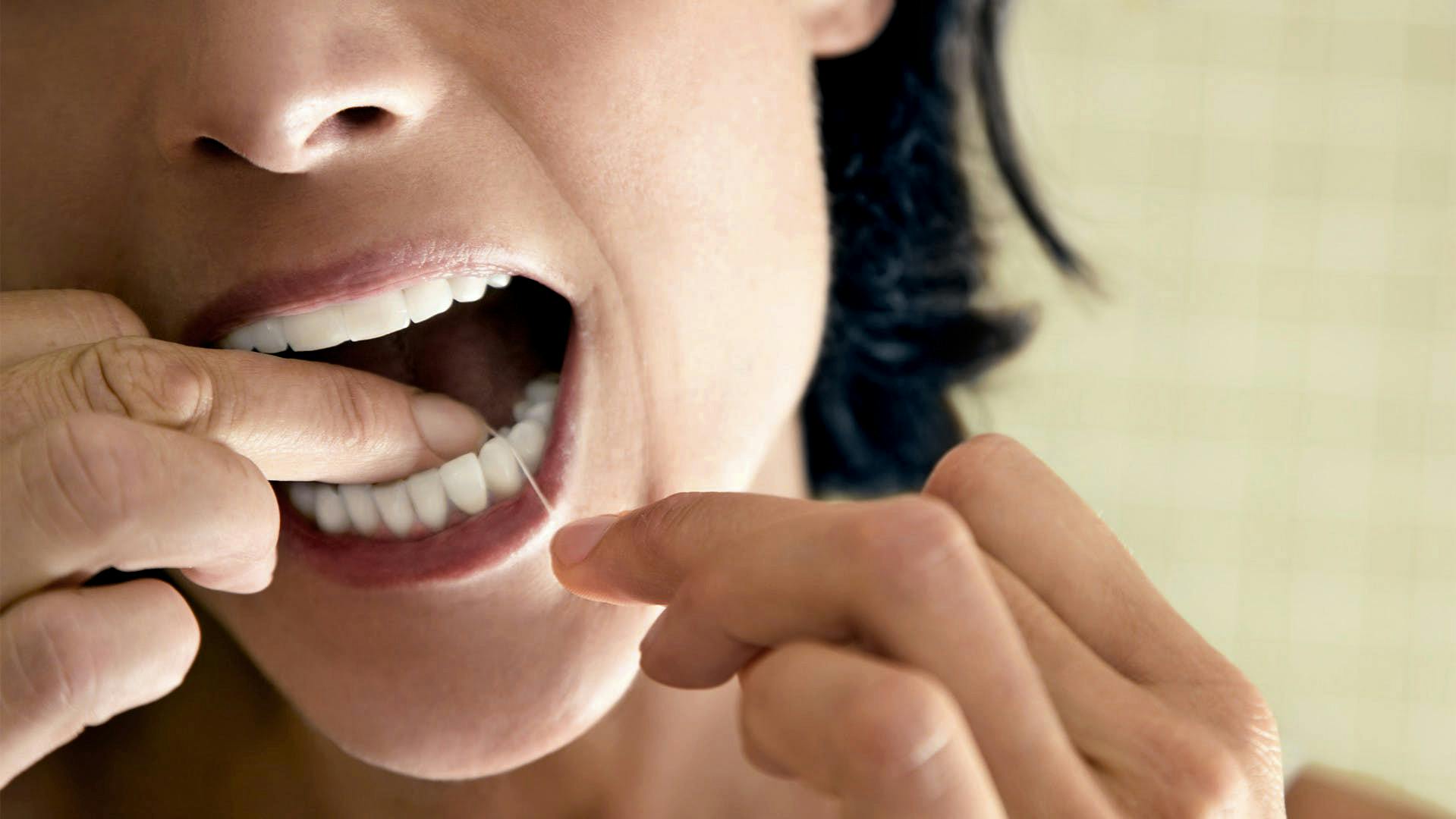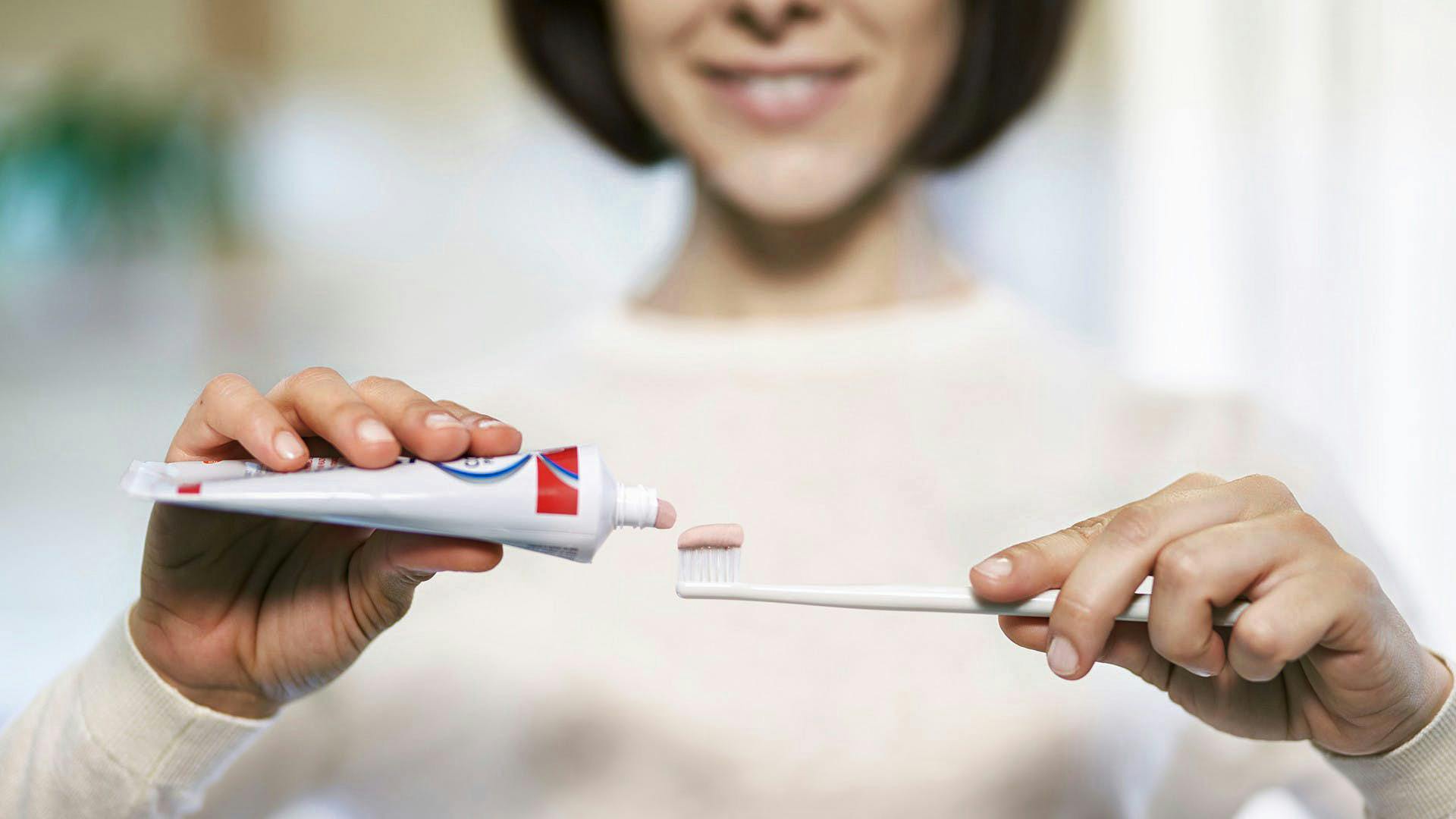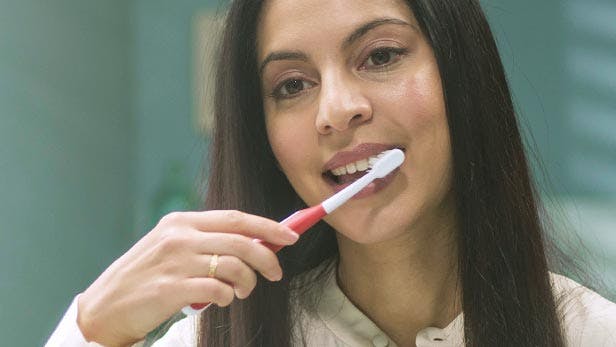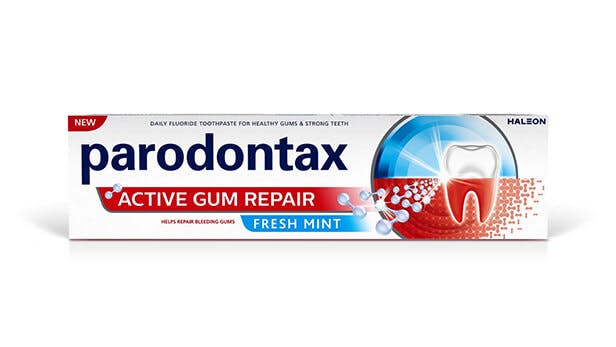ME

WHY DO I NEED TO FLOSS?
Keeping your teeth and gums clean by removing plaque bacteria is the best way to protect against gum disease. However, it can be difficult to reach spaces in between your teeth by brushing alone. Flossing is the recommended way to reach the interproximal spaces and can help to remove stubborn food particles and plaque from your gum line that brushing can't quite reach — helping to keep your smile healthy.
Learn more about flossing teeth and discover the benefits of flossing below.
The benefits of flossing — What does flossing do?
Dental floss is a thin, soft thread that can help you to remove plaque build up from between your teeth and below the gum line (where your tooth meets the gum}.
While interdental brushes can be very effective at keeping those hard to reach spaces clean, sometimes the gaps between your teeth are too small to fit a brush in, which is why floss is a great alternative. Flossing is important for two main reasons:
1. It helps to remove trapped food particles.Flossing can help to dislodge bits of food that get stuck between your teeth. Not only will this help your smile to look better, it will also help to keep it healthy. Plaque contains bacteria that feeds on leftover food particles and releases acids that, over time, can eventually cause tooth erosion and cavities.
2. It helps to remove plaque. Not only can palaque contribute to tooth decay, left untreated, it can also calcify into a rough substance called tartar or ‘calculus' over time. Tartar can eventually cause gum disease if not removed. The bad news is, while plaque can be removed at home (with twice—daily brushing and flossing) tartar cannot. only a dentist or dental hygienist can remove tartar once it has formed on your teeth.
How to floss your teeth
When it comes to flossing teeth effectively, using the correct technique is vital. Here's our simple guide to help show you how to floss properly:
1. Always be gentle, if you floss too aggressively you could damage your gums.
2. Break off around 45cm of floss and wind the ends around one finger of each hand.
3. Hold the floss gently between your thumbs and forefingers, with around 2.5cm held taut between them.
4. Use a gentle rocking motion to insert the floss between your teeth.
5. When the floss reaches the gum line, curve it into a C—shape against the tooth.
6. Hold the floss against the side of the tooth and gently scrape the floss upwards away from the gum, repeat on the other side of the gap on the edge of the next tooth. Do not snap or saw the floss.
7. Don't forget the back of your last tooth.
8. Keep to a regular rhythm to ensure you don't miss any teeth out. If you aren't sure about how to floss correctly ask your dentist or hygienist to show you the right technique.
How often should you floss?
From the age of 12 you should use interdental brushes or floss to clean between your teeth once a day.
Should you floss before or after brushing?
If you're wondering whether you should floss before or after brushing, you're not alone.
We recommend that you floss before brushing if possible. However, ultimately, it doesn't matter when you floss as long as you do it properly. The most important thing is making flossing part of your daily oral care routine.
Why do my gums bleed when I floss?
If your gums bleed when flossing or feel tender when you first start flossing, don't worry. This is normal and should stop within a few days as your gums begin to get healthier.
If you are still seeing blood when you floss after a few days it could be a sign that you have gum disease. Speak to your dentist if your bleeding gums do not improve. They can check the health of your gums and advise you on the best course of action.
Why do my gums hurt after flossing
Again, feeling tender or sore gums when you first add flossing to your oral health routine is normal. As with bleeding gums, this pain should go away within a few clays as your gum health improves. If the tenderness persists, speak to your dentist. They can observe you flossing and correct your technique if required, or check for any signs of gum disease.
What if a dental appliance help stop me from flossing?
Many people have dental appliances {such as braces or dentures) that may make flossing more difficult, but that doesn't mean that it can't, or shouldn't, be done. If you are struggling to floss properly, speak to your dentist or orthodontist about the best flossing technique for you.
Mouthwash can also help to remove plaque bacteria from deep between your teeth. If flossing is an issue for you, try a fluoride mouthwash like parodontax Daily Gum Care Mouthwash, which targets 3x more bacteria than brushing alone — and targets bacteria where brushing alone can't reach.
The bottom line is that daily flossing is an integral part of any effective oral health routine. Like brushing twice daily with a fluoride toothpaste like parodontax orginal Daily Fluoride toothpaste. flossing is an important ally in the battle against gum disease.



